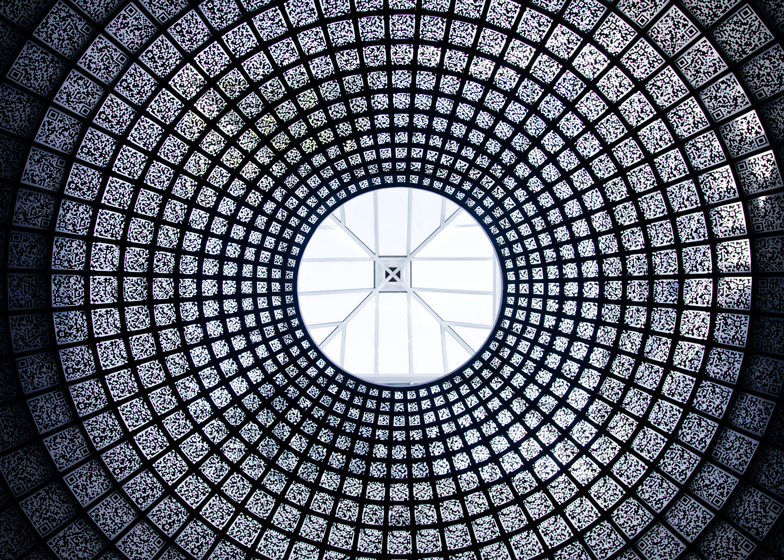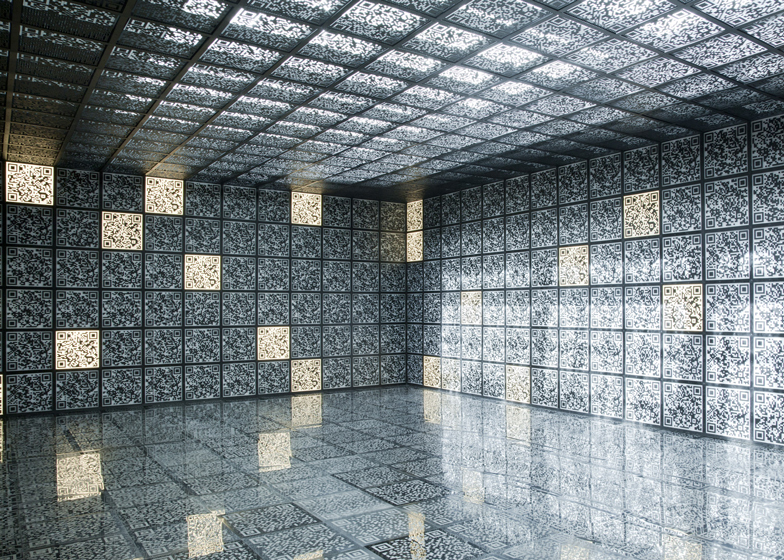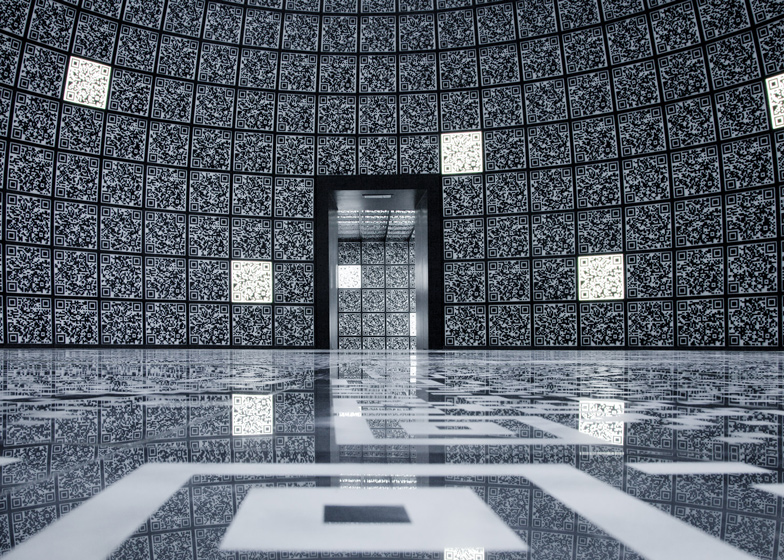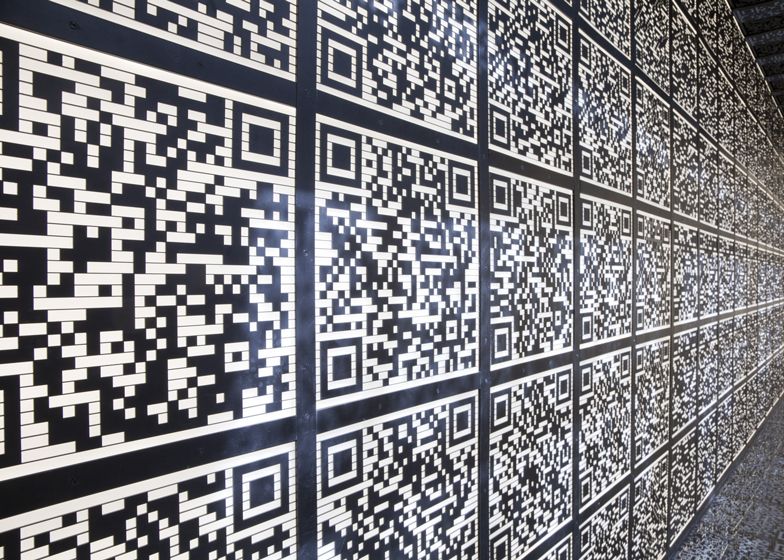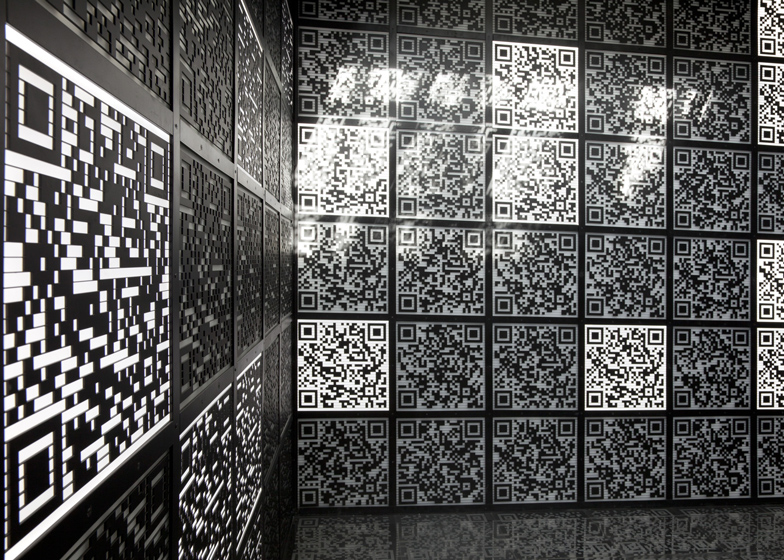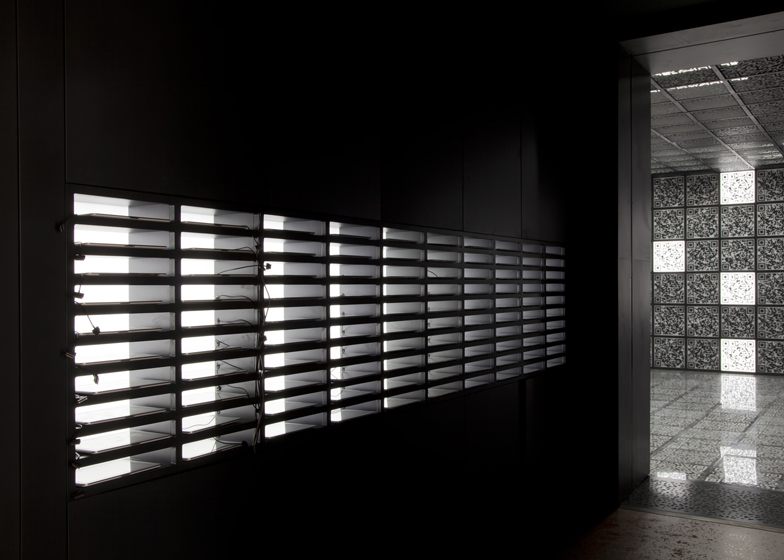Every surface inside the top floor of the Russian Pavilion at the Venice Architecture Biennale is covered in QR codes, which visitors decode using tablet computers to explore ideas for a new Russian city dedicated to science.
Downstairs, visitors can peer through lenses to catch a glimpse of the gated and secretive science towns established under the Soviet Union, intended to provide a contrast with the open and collaborative vision presented upstairs.
The Skolkovo science and technology centre will be located near Moscow by 2017 and bring together 500 companies working on IT, biomedical research, nuclear research, energy and space technology plus a university and homes.
The architectural team includes Pierre de Meuron, Rem Koolhaas, Kazuyo Sejima and the Venice Architecture Biennale's director David Chipperfield, plus the winners of several rounds of competitions to be held as the project progresses.
The exhibition is curated by Sergei Tchoban and Sergey Kuznetsov of SPEECH Tchoban & Kuznetsov, who are masterplanning the Skolkovo project and were part of the team behind The Russia Factory exhibition at the same pavilion two years ago.
The 13th Venice Architecture Biennale opens to the public today and continues until 25 November.
More stories about Venice Architecture Biennale 2012 »
Our photos from the biennale on Facebook »
Our movie interview with biennale director David Chipperfield »
Photographs are by Patricia Parinejad.
Here's some more information from the curators:
In this part of the exhibition we show plans for a new city of science located near Moscow, in Russia. This project already involves some of the most important scientific centres in the world and will include a new university and homes for more than 500 firms working in distinct fields of science - IT, biomedical research, nuclear research, energy, and space technology.
Currently,these firms are situated in different parts of the world and interact with one another as a network. Our objective is to construct a city for this new community.
In our pavilion we have tried to find an architecture metaphor for connecting the real and the virtual. People today live at the intersection of on- and off-line; 'our common ground' is becoming a cipher for infinite mental spaces.
What will the city of the future look like, and, in particular, the city of science? The answer is to be found in the Skolkovo project. For the moment, these are plans; but their implementation should be competed in 2017.
The core of the architectural team for the project consists of Pierre de Meuron, Rem Koolhaas, Kazuyo Sejima, Mohsen Mostafavi, Sergei Tchoban, Sergey Kuznetsov, David Chipperfield, Yury Grigoryan, and Steano Boeri. The team is continually growing. We recently held our first competition to find additional architects for some apartment buildings. 600 architects took part in the competition, of whom 10 received commissions. Another three large competitions are to be held. Come and join in!
Duing the cold-war period from 1945 until 1989 more than 60 gated towns and cities were created in the Soviet Union for scientific and technological research. The existence of these cities was kept secret. They were everywhere in the country, and yet it was as if they did not exist.
The people who worked within were isolated from society and were sometimes, for the sake of secrecy, given new names and surnames. These cities and their inhabitants were invisible except to the watchful eyes of the secret service.
For the exhibition we named this secret country 'i-land'. It is the subject of the exhibition on the ground floor of the Russian Pavilion.
The new city - the Skolkovo innovation centre - is an instrument for transforming science after the end of the cold war. This is an open city which is being created by some of the world's most acknowledged architects, and we hoe to attract some of the world's advanced scientists. We called this city of the future 'i-city'. You will find it on the upper level.

